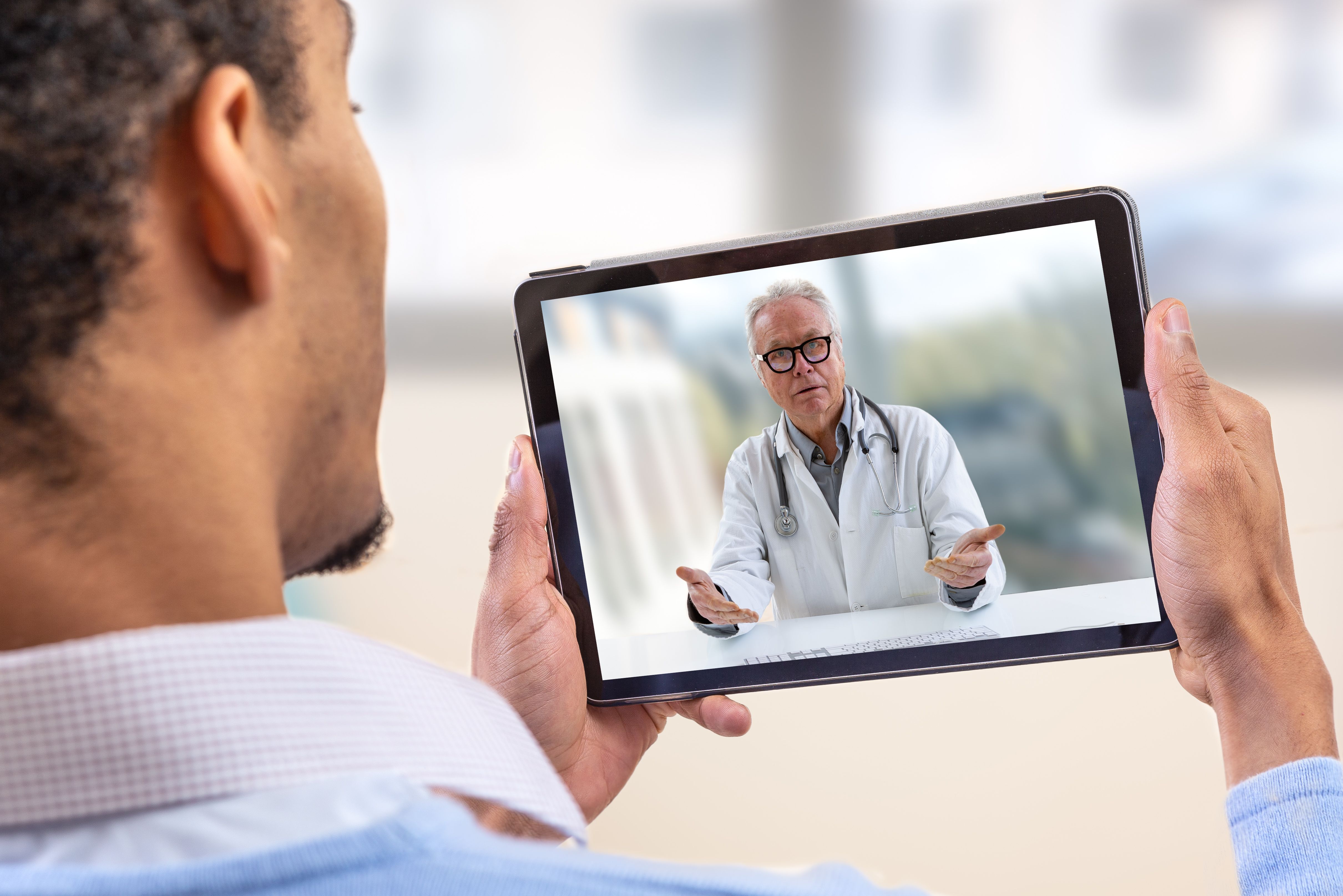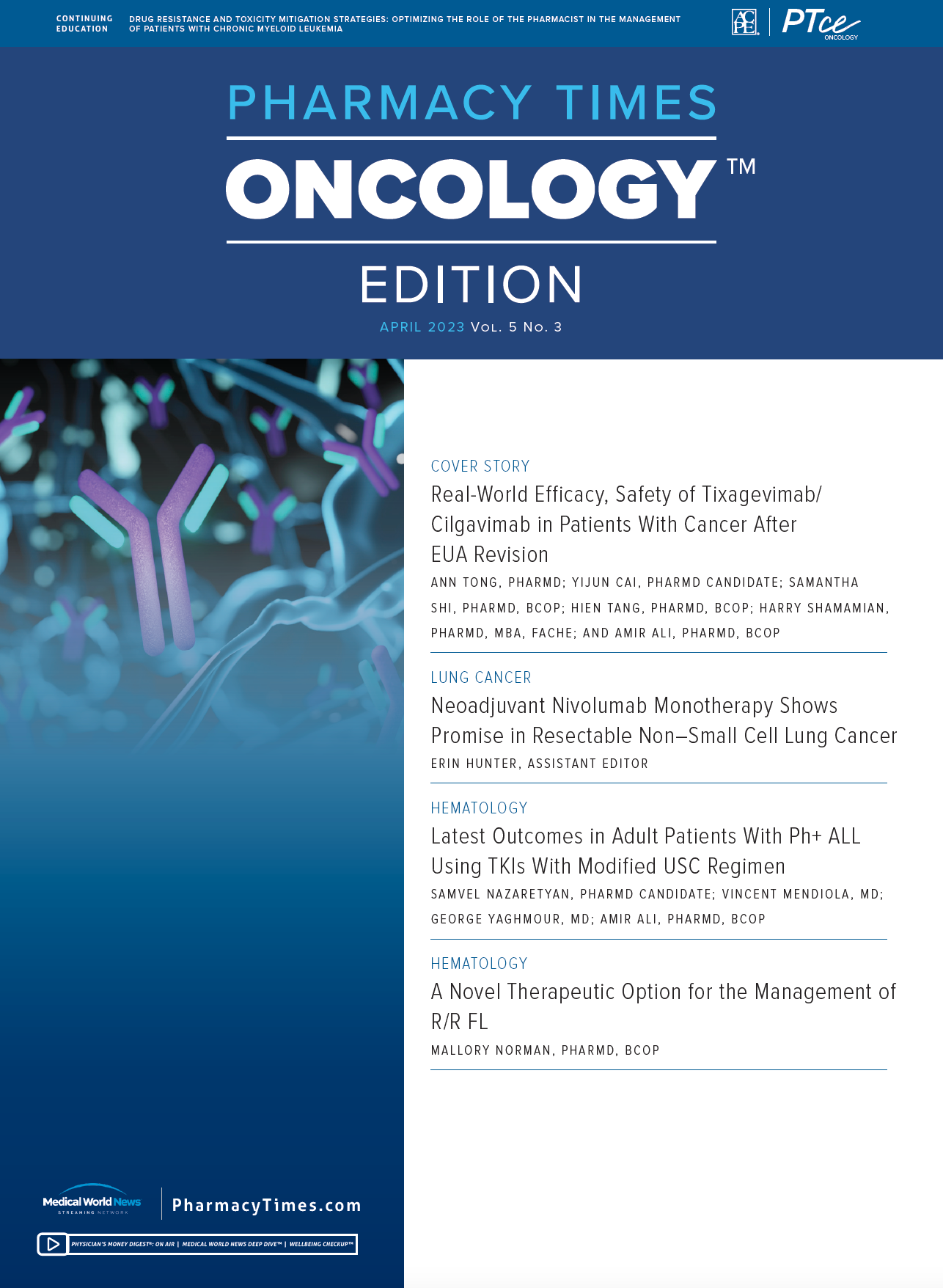Since the start of the COVID-19 pandemic, the need for telemedicine at the specialty pharmacy has increased, bringing specialty pharmacists closer to patients than ever before and making it possible for them to establish stronger bonds with patients while continuing to coordinate their treatment and support their care.1
Specialty pharmacies have developed teams to provide remote services, including medication therapy management (MTM), and offer guidance on medication administration, storage, adverse effects (AEs), etc. For their part, technicians offer teleservices pertaining to insurance claims and their submission. Technology also allows team members to investigate financial aid that may be available through manufacturers and state programs for patients who have difficulties with co-pays and/or out-of-pocket (OOP) costs to keep their expenses down and eliminate this barrier to adherence.
Technology makes prescription processing quicker as well, which can shorten the time it takes for patients to receive medications and so decrease time to treatment initiation. It also makes for more effective monitoring of treatment adherence via assessments and surveys and swifter updating of patient profiles. This means that pharmacists can intervene more quickly when there are adherence problems, counsel patients about missed doses, and determine whether outreach to the physician is necessary.
Pharmacy Times: Call for Papers
Pharmacy Times Oncology EditionTM and Pharmacy Times Health-System EditionTM are seeking to expand our current coverage offerings to include peer reviewed research on clinical topics and treatment of different disease states.
The publications are seeking to focus on a wide range of therapeutic categories in the oncology and health-system pharmacy space to educate readers and translate innovative clinical discoveries into improved health outcomes for patients. This new focus on clinical research seeks to accelerate adaptation of new therapeutics, techniques, and technologies from the publication’s pages to the clinical setting.
The clinical manuscripts sought will examine different treatments for and management of the different disease states and pharmacologic interventions. Of particular interest are papers that highlight the role of the pharmacist within the overall health care team and provide insight into the impact pharmacists have on patient outcomes. These submissions will be peer-reviewed and published in upcoming editions of Pharmacy Times Oncology Edition and Pharmacy Times Health-System Edition.
Some clinical topics of interest include:
- Transitions of Care
- Immuno-oncology
- Hematology
- Breast Cancer
- Lung Cancer
- Leukemia/Lymphoma
- Ovarian Cancer
- Melanoma
- Head and Neck Cancer
- Antimicrobial Stewardship
- Cardiovascular Disease
- Renal Disease
- Metabolic Disease
- 340B
- Biosimilar Adoption
- Immunizations
- HIV and Pre-exposure Prophylaxis
To send in research paper submissions or if you have any questions, please email Davy James ([email protected]) or Alana Hippensteele ([email protected]).
In short, telemedicine allows specialty pharmacists to meet patients where they are, literally and figuratively, and help cancer care teams in particular identify and combat issues relating to social determinants of health. Opportunities to address patient concerns about their treatment, its progress, and other issues as they arise enable pharmacists to take a more active role in the patients’ treatment and care journey.
Analysis at Specialty Pharmacy
In a 2019 retrospective analysis of patients with pulmonary arterial hypertension at Vanderbilt Specialty Pharmacy (VSP), integrated telemedicine collaboration across care teams was shown to improve adherence. Investigators measured adherence using proportion of days covered (PDC), or total days covered by medication fills, divided by the total number of days for which the provider had prescribed the medication.2
Tadalafil (Adcirca; Eli Lilly) and sildenafil (Revatio; Pfizer) were monitored between January 1, 2014, and December 31, 2016, and results showed that overall PDC at VSP was 96% (SD, 0.092), with 94% of patients achieving a PDC of 80% or more. Furthermore, many patients were able to obtain some form of financial assistance via manufacturer co-pay assistance or grants.2
Notably, investigators did not make a distinction between high OOP co-pays and adherence because patients’ OOP costs were lower because of VSP’s ability to apply co-pay assistance to prescriptions. Results from other studies, however, have shown that patients with higher co-pays have lower adherence rates than those with relatively lower ones.2 In addition, the prescriptions were not on autofill but instead required that patients speak with a member of the pharmacy staff.
Eliminating Barriers to Treatment
Telemedicine can greatly affect, and sometimes eliminate, barriers to treatment for vulnerable populations such as those who are immunocompromised, those with physical disabilities that make in-person appointments difficult, or those who face stigma because of disease state or other factors. Patients with cancer are an example of a population that would benefit from these services.
During the pandemic, oncologists sought to change medication administration routes from intravenous to oral whenever possible2 and thus decrease the need for patients to travel to receive chemotherapy infusions3 and protect them from further risk of infection. Thanks to this shift, patients have been able to save not only time but the travel costs associated with cancer treatment. They no longer need to make themselves available for all-day clinic appointments that may require commuting to a nearby city or state.3
Oral oncolytics have been particularly beneficial for patients in rural locations, easing their treatment burden. In addition, if patients with cancer in nonurban areas can access home nursing services, such services can be scheduled during telemedicine MTM assessments, alleviating the strain on patient schedules, finances, and overall well-being.3
Telemedicine in Practice
Specialty pharmacists at AllianceRx Walgreens Pharmacy use telecommunication to counsel patients on initial medication fills. During this session, the pharmacist can review proper administration, storage, AEs, and disease outcome monitoring. If patients report AEs or adherence issues, pharmacists can provide additional counseling or reach out to an oncologist to inform them that their intervention is needed.
AllianceRx has also established a model for other telemedicine services called Connected Care, which provides patients with outreach from a pharmacist at different stages of therapy, allowing for more immediate intervention during the course of therapy, assistance with adherence and AEs, and better overall quality of care. Pharmacists can also access electronic medical records to view notes from other care team members and follow patients’ progress. They can determine whether there are any gaps in therapy and identify additional treatment requirements, such as those for antiemetics or hematopoietic agents.
Future of Specialty Pharmacy Telemedicine
Improvements in technology will continue to increase and strengthen telemedicine services. One area of potential growth is the use of videoconferences for MTM counseling. This would allow pharmacists to demonstrate in real time how injections should be administered and to better evaluate patient outcomes for dermatological disorders. Images captured during the MTM videoconference could provide more information about the patient’s treatment progression, making it easier to determine whether a treatment is appropriate for that individual.
Another improvement would be to allow patients to communicate with the pharmacy through its website. This would give pharmacists the flexibility to provide outreach at a time that works with everyone’s schedule and to receive orders for Lab-in-a-Box to send to patients so that home health professionals can take blood draws,3 thus giving patients at home the full health care experience and allowing the system to meet every patient’s needs.
Technology's Limitations
Although telemedicine continues to grow, limitations still exist. Primarily, lack of access to Wi-Fi and to fast, reliable internet connections continues to be a barrier for some patients.4 Moreover, skepticism about switching to telemedicine may also remain a barrier.5 Certain patients may be concerned that they won’t receive the same quality of care as those who are seen in person. However, clinicians can overcome this skepticism by continuing to demonstrate that level of care does not alter in a remote setting.
Telemedicine is a necessary tool in today’s health care landscape. As barriers and limitations slowly fade for more patients, it would not be surprising to see telemedicine take center stage in our health care system. As pharmacists, we can be at the forefront of this transformation and thus have a significantly positive impact on our patients’ daily lives.
About the Author
Michael Piskuric, PharmD, CSP, is a lead compounding pharmacist at AllianceRx Walgreens Pharmacy.
References
1. Talal AH, Sofikitou EM, Jaanimägi U, Zeremski M, Tobin JN, Markatou M. A framework for patient-centered telemedicine: application and lessons learned from vulnerable populations. J Biomed Inform. 2020;112:103622. doi:10.1016/j.jbi.2020.103622
2. Shah NB, Mitchell RE, Proctor ST, et al. High rates of medication adherence in patients with pulmonary arterial hypertension: an integrated specialty pharmacy approach. PLoS ONE. 2019;14(6):e0217798. doi:10.1371/journal.pone.0217798
3. Castro CS, Manoogian A. COVID-19 and the Impact on oral oncolytics: a specialty pharmacy perspective. Pharmacy Times Oncology Edition. August 26, 2020. Accessed March 8, 2023. https://www.pharmacytimes.com/view/covid-19-and-the-impact-on-oral-oncolytics-a-specialty-pharmacy-perspective
4. Home healthcare. Labcorp. 2023. Accessed January 11, 2023. https://www.labcorp.com/providers/resources/home-healthcare
5. Baldoni S, Amenta F, Ricci G. Telepharmacy services: present status and future perspectives: a review. Medicina (Kaunas). 2019;55(7):327. doi:10.3390/medicina55070327







